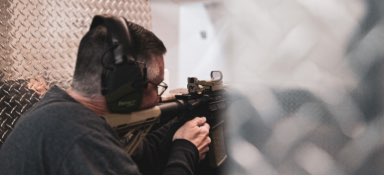3 Ammunition Tests That Can Be Run With Ballistic Gel

As any gun enthusiast will tell you, not all ammunition is created equal. But how can gun owners tell which ammunition is the best for firearms, whether for hunting or self-defense? If you manufacture ballistic gel blocks, you’ll want to make sure your products are up to the challenge of an ammunition test, so you may want to do a little testing of your own.
Ballistic gelatin has been used by many different industries, including FBI, military and law enforcement officials. In fact, anyone with the right training and supplies can use ballistic gel to test their ammunition. Think your ballistic gel blocks can handle the job? Are you just curious about which ammunition reigns supreme? Stock up on wholesale ballistic gelatin and start testing with these tips.
Important: Only those who are trained and licensed to use a firearm should conduct ammunition tests.
What You Need for Ballistic Gel Ammunition Testing
You’ll need a few items to accurately run ammunition tests on your ballistic gel blocks. First of all, you obviously need to have plenty of wholesale ballistic gelatin for testing. Also, make sure you have enough molds and mold liners on hand. Each test will require one gel block.
Next, you need to have the firearms and ammunition, or archery devices, that you want to test with ballistic gel. It’s a good idea to subject your products to as wide a range of ammunition as possible. Finally, one of the tests listed requires a piece of cotton fabric, like a t-shirt or sheet. Just remember to use the same type of fabric in each test so you don’t skew the results.
Ammunition Tests Using Ballistic Gel
Once you have all of your supplies together, you’re ready to run ammunition tests on your ballistic gel blocks.
Ballistic Gel Test #1
The first test you should run is also the simplest, requiring just a ballistic gelatin block and ammunition. Stand 10 feet away from the gel block, then fire one bullet or arrow at a time. You can test up to three shots per block of ballistic gel.
Ballistic Gel Test #2
For this next test, you will use the same testing method but add the previously mentioned cotton fabric. Again, you’ll stand 10 feet away from your ballistic gel block, but this time it will be covered with the fabric.
This test will take into account the ammunition’s penetration as if someone is wearing a cotton shirt. You can try different types of clothing as well. Just make sure your tests compare examples that have the same amount and type of clothing on the gel blocks.
Ballistic Gel Test #3
Other ballistic gel tests for ammunition involve different firing distances. To begin, it’s a good idea step back about 20 feet from the gel block, which can be covered with the cotton fabric if you wish. This testing scenario will give you insight into how your products will perform with ammunition from a farther targeting distance. You can then perform more tests at greater distances, but this is a good place to start.
Understanding the Results
Ballistic gelatin is used to test ammunition because it has a similar density to human or big game tissue. But since the gelatin is clear, you can see the path of the bullet when hitting the target and how it changed once inside. When looking at the results of your ammunition testing, there are a few key items users will examine. Pay attention to how your ballistic gel blocks perform, as this is what your customers will want to know.
Penetration of the Ammunition
The first result to measure for your ballistic gelatin is penetration depth. To do this, you’ll measure from the start of the gel block to where the bullet ended up inside it.
Measuring the Expansion
Next, you can measure the expansion of the bullet. Retrieve the bullet from the ballistic gel block after you’ve completed the other measurements. Bullets are expected to expand upon hitting a target to ensure they cause damage. Measure the diameter of an unfired bullet of the same kind and compare it to the fired bullet retrieved from the gel block. While there is not a set standard for measuring the expansion of bullets, it should be around 1.5 times larger than the diameter before being fired.
Weight Retention
Another result you’ll want to examine with your ballistic gel is how well the ammo was able to retain weight, meaning how well it stayed in one piece, even while traveling through the target. A higher retained weight suggests that a bullet may be more accurate and do more damage at longer ranges. To check retained weight, you’d weigh the bullet before being shot into the target and then measure it again after the bullet was retrieved from the gelatin block. Once you have the two measurements, compare the initial weight and the weight after retrieval.
The Best Way to Test Your Ballistic Gel Blocks
Getting insightful data about ammunition can help you manufacture better ballistic gel blocks for ammunition testing. Remember:
- You’ll only need ballistic gel, ammunition, a firearm and fabric to conduct these tests.
- Test the ammunition at different distances and under circumstances, such as with layers of fabric.
- After running the tests, note how your ammunition gel blocks were able to provide valuable information regarding penetration, expansion and weight retention.
There’s a reason the FBI and law enforcement use ballistic gel for their ammunition tests, and that’s because of the informative results. Start testing your ballistic gel blocks today to ensure that they are up to the challenge. Custom Collagen can provide the wholesale ballistic gelatin you need to start testing.
